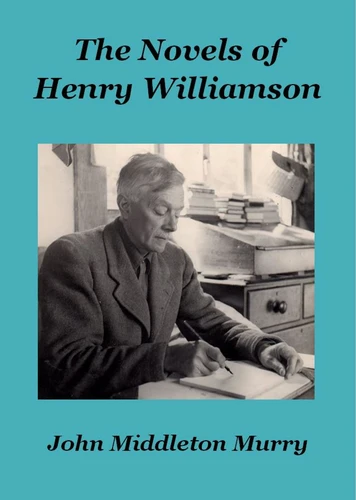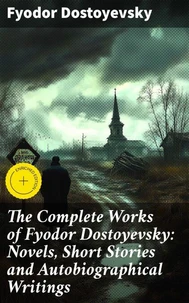The Novels of Henry Williamson. Henry Williamson Collections, #17
Par :Formats :
Disponible dans votre compte client Decitre ou Furet du Nord dès validation de votre commande. Le format ePub est :
- Compatible avec une lecture sur My Vivlio (smartphone, tablette, ordinateur)
- Compatible avec une lecture sur liseuses Vivlio
- Pour les liseuses autres que Vivlio, vous devez utiliser le logiciel Adobe Digital Edition. Non compatible avec la lecture sur les liseuses Kindle, Remarkable et Sony
 , qui est-ce ?
, qui est-ce ?Notre partenaire de plateforme de lecture numérique où vous retrouverez l'ensemble de vos ebooks gratuitement
Pour en savoir plus sur nos ebooks, consultez notre aide en ligne ici
- FormatePub
- ISBN978-1-873507-59-9
- EAN9781873507599
- Date de parution09/11/2013
- Protection num.pas de protection
- Infos supplémentairesepub
- ÉditeurHenry Williamson
Résumé
Although Henry Williamson (1895-1977), nature writer and novelist, remains best known for his nature stories set in North Devon and the much-loved classics Tarka the Otter and Salar the Salmon, he wrote many other highly regarded novels. There has been a tendency for critics of his work to attempt to analyse the man rather than the writing that he produced in a career lasting over fifty years. The exception was John Middleton Murry (1889-1957), and this brilliant, long essay considering Williamson's novels first appeared in the posthumous collection Katherine Mansfield and other Literary Studies (1959).
Murry had a distinguished career as a literary critic, and his essay remains essential reading for those who want to understand better Williamson's writings. It is written in a clear, elegant style, while the literary analyses of the works give to the essay its greatest distinction. The novels that Murry considers include the four that make up the tetralogy The Flax of Dream (The Beautiful Years; Dandelion Days; The Dream of Fair Women; The Pathway); The Star-born; The Gold Falcon; The Phasian Bird; and the first four volumes of Williamson's magnum opus, the fifteen-volume A Chronicle of Ancient Sunlight (The Dark Lantern; Donkey Boy; Young Phillip Maddison; How Dear is Life).
He thought highly of the books making up the Chronicle, and recognised them as major novels in the great and central tradition of English fiction. Of How Dear is Life he wrote, 'I do not know of any picture of the 1914-1918 war which can be compared with it for sheer power of enduring in the reader's memory. In a queer way it is not terrible; it does not haunt so much as satisfy the imagination. It is human, it is humorous, it is pathetic, it is noble - and, above all else, it is beautiful.
It is the work of a truly gifted artist, come at last, after much inward travail, to a mastery of his own self-disturbing powers, and working on the grand scale.'
Murry had a distinguished career as a literary critic, and his essay remains essential reading for those who want to understand better Williamson's writings. It is written in a clear, elegant style, while the literary analyses of the works give to the essay its greatest distinction. The novels that Murry considers include the four that make up the tetralogy The Flax of Dream (The Beautiful Years; Dandelion Days; The Dream of Fair Women; The Pathway); The Star-born; The Gold Falcon; The Phasian Bird; and the first four volumes of Williamson's magnum opus, the fifteen-volume A Chronicle of Ancient Sunlight (The Dark Lantern; Donkey Boy; Young Phillip Maddison; How Dear is Life).
He thought highly of the books making up the Chronicle, and recognised them as major novels in the great and central tradition of English fiction. Of How Dear is Life he wrote, 'I do not know of any picture of the 1914-1918 war which can be compared with it for sheer power of enduring in the reader's memory. In a queer way it is not terrible; it does not haunt so much as satisfy the imagination. It is human, it is humorous, it is pathetic, it is noble - and, above all else, it is beautiful.
It is the work of a truly gifted artist, come at last, after much inward travail, to a mastery of his own self-disturbing powers, and working on the grand scale.'
Although Henry Williamson (1895-1977), nature writer and novelist, remains best known for his nature stories set in North Devon and the much-loved classics Tarka the Otter and Salar the Salmon, he wrote many other highly regarded novels. There has been a tendency for critics of his work to attempt to analyse the man rather than the writing that he produced in a career lasting over fifty years. The exception was John Middleton Murry (1889-1957), and this brilliant, long essay considering Williamson's novels first appeared in the posthumous collection Katherine Mansfield and other Literary Studies (1959).
Murry had a distinguished career as a literary critic, and his essay remains essential reading for those who want to understand better Williamson's writings. It is written in a clear, elegant style, while the literary analyses of the works give to the essay its greatest distinction. The novels that Murry considers include the four that make up the tetralogy The Flax of Dream (The Beautiful Years; Dandelion Days; The Dream of Fair Women; The Pathway); The Star-born; The Gold Falcon; The Phasian Bird; and the first four volumes of Williamson's magnum opus, the fifteen-volume A Chronicle of Ancient Sunlight (The Dark Lantern; Donkey Boy; Young Phillip Maddison; How Dear is Life).
He thought highly of the books making up the Chronicle, and recognised them as major novels in the great and central tradition of English fiction. Of How Dear is Life he wrote, 'I do not know of any picture of the 1914-1918 war which can be compared with it for sheer power of enduring in the reader's memory. In a queer way it is not terrible; it does not haunt so much as satisfy the imagination. It is human, it is humorous, it is pathetic, it is noble - and, above all else, it is beautiful.
It is the work of a truly gifted artist, come at last, after much inward travail, to a mastery of his own self-disturbing powers, and working on the grand scale.'
Murry had a distinguished career as a literary critic, and his essay remains essential reading for those who want to understand better Williamson's writings. It is written in a clear, elegant style, while the literary analyses of the works give to the essay its greatest distinction. The novels that Murry considers include the four that make up the tetralogy The Flax of Dream (The Beautiful Years; Dandelion Days; The Dream of Fair Women; The Pathway); The Star-born; The Gold Falcon; The Phasian Bird; and the first four volumes of Williamson's magnum opus, the fifteen-volume A Chronicle of Ancient Sunlight (The Dark Lantern; Donkey Boy; Young Phillip Maddison; How Dear is Life).
He thought highly of the books making up the Chronicle, and recognised them as major novels in the great and central tradition of English fiction. Of How Dear is Life he wrote, 'I do not know of any picture of the 1914-1918 war which can be compared with it for sheer power of enduring in the reader's memory. In a queer way it is not terrible; it does not haunt so much as satisfy the imagination. It is human, it is humorous, it is pathetic, it is noble - and, above all else, it is beautiful.
It is the work of a truly gifted artist, come at last, after much inward travail, to a mastery of his own self-disturbing powers, and working on the grand scale.'





